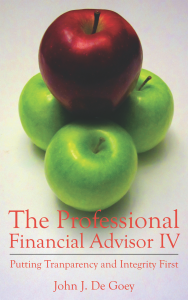Understanding smart beta
A growing class of ETFs is giving investors access to active strategies but for a fraction of the cost of owning mutual funds
Advertisement
A growing class of ETFs is giving investors access to active strategies but for a fraction of the cost of owning mutual funds
 It might be said that for many years the pre-eminent way of looking at investing was through security selection and market timing. These are the primary tenets of active management as practiced currently.
Many of these ideas were first spelled out by the great Benjamin Graham in his books Security Analysis and The Intelligent Investor, both written before 1950. More than half a century ago, a man from Princeton named John Bogle created what many now view as the world’s first index fund. Instead of doing things the way that Mr. Graham advocated, Mr. Bogle put forward the idea that cost was a major drag on investment performance. Some years (and more than a few slammed doors) later, Bogle founded a mutual fund company called Vanguard. You may have heard of it.
Despite considerable backlash—including allegations that Bogle was “un-American”—Vanguard is now one of the largest money managers on the planet and is taking in net new assets to the tune of about a billion dollars a day. Mr. Bogle likes to quip that he is less concerned with the efficient market hypothesis than he is with the “cost-matters hypothesis.” In essence, he doesn’t care about how efficient or inefficient markets are. Rather, his concern is one of simple cost minimization.
It might be said that for many years the pre-eminent way of looking at investing was through security selection and market timing. These are the primary tenets of active management as practiced currently.
Many of these ideas were first spelled out by the great Benjamin Graham in his books Security Analysis and The Intelligent Investor, both written before 1950. More than half a century ago, a man from Princeton named John Bogle created what many now view as the world’s first index fund. Instead of doing things the way that Mr. Graham advocated, Mr. Bogle put forward the idea that cost was a major drag on investment performance. Some years (and more than a few slammed doors) later, Bogle founded a mutual fund company called Vanguard. You may have heard of it.
Despite considerable backlash—including allegations that Bogle was “un-American”—Vanguard is now one of the largest money managers on the planet and is taking in net new assets to the tune of about a billion dollars a day. Mr. Bogle likes to quip that he is less concerned with the efficient market hypothesis than he is with the “cost-matters hypothesis.” In essence, he doesn’t care about how efficient or inefficient markets are. Rather, his concern is one of simple cost minimization.
Share this article Share on Facebook Share on Twitter Share on Linkedin Share on Reddit Share on Email